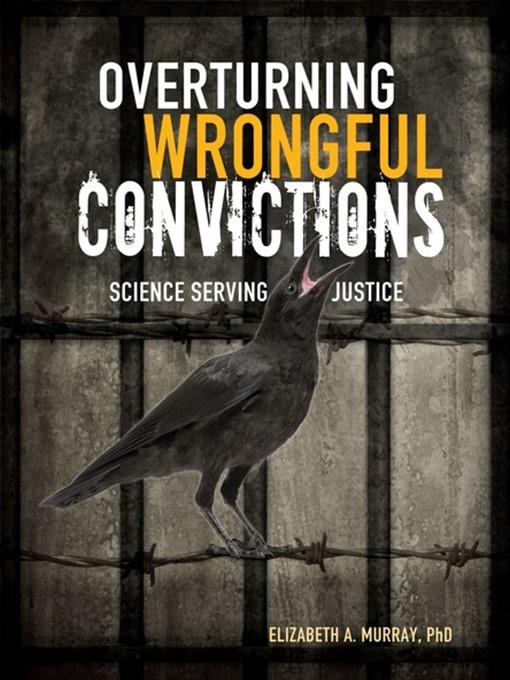
Overturning Wrongful Convictions
Science Serving Justice
فرمت کتاب
ebook
تاریخ انتشار
2015
Lexile Score
1160
Reading Level
8-9
نویسنده
Elizabeth A. Murray, PhDشابک
9781467763073
کتاب های مرتبط
- اطلاعات
- نقد و بررسی
- دیدگاه کاربران
نقد و بررسی

April 1, 2015
Gr 9 Up-This well-researched, extremely thorough look at how the legal system can go awry examines how people end up wrongly incarcerated and the paths that may lead to exoneration. Forensic scientist Murray presents the steps that comprise a criminal case, including arrest, arraignment, trail, plea deals, verdicts, and appeals, before detailing the potential for errors at every stage. She notes that approximately 40,000 to 100,000 people are wrongly behind bars-a staggering statistic. Murray also describes groups that fight wrongful convictions, like the Innocence Project, as well as ways that convicts are exonerated through advances in science, particularly in the area of DNA evidence. Reasons for wrongful convictions are laid out: mishandled evidence, unreliable witness accounts, false confessions, sloppy police work, bad legal counsel, racial prejudice, and mistakes made by judges. Murray looks at what happens next for those who are exonerated, noting the issues that come with reintegration into society. Though the explanations of legal procedures can be on the dense side, the text is broken up by fascinating profiles of individuals who have been exonerated. The writing is on the scholarly side, making it ideal for students doing research or seeking an in-depth analysis of the subject. VERDICT A strong purchase about an always timely issue.-Amanda MacGregor, formerly at Apollo High School Library, St. Cloud, MN
Copyright 2015 School Library Journal, LLC Used with permission.

December 1, 2014
So very rarely is anything perfect, but when the legal process malfunctions, the result can be the horror of unjust incarceration.It is estimated that 2 to 5 percent of the American prison population-that is, 40,000 to 100,000 souls-are wrongly behind bars, writes veteran forensic scientist Murray. They are the victims of inept counsel, snitches looking for a payday, judges guilty of official misconduct ("such as bias, corruption, or incompetence"), police bullying, flawed or malicious testimony, and racial prejudice-what one attorney refers to as "legal lynching." But since the late 1980s, a handful of exoneration organizations have worked to overturn wrongful convictions. As Murray writes, they principally address high-profile cases, such as murder and rape, where the consequences can be the death penalty; over the last 25 years, 1,400 men and women have been exonerated. Murray lays a solid foundation for readers, taking them through the legal system's long road, from questioning all the way to appeal, while explaining how exoneration is achieved, mostly through DNA testing and fingerprints. More rarely it's achieved by displaying overwhelming evidence of faulty prosecution (as she writes, "Grave mistakes are often the hardest to admit"). Of exonerated prisoners, notes Murray, the average age of incarceration is 27 and the average age of release is 42. A chilling expose. (Nonfiction. 13-18)
COPYRIGHT(2014) Kirkus Reviews, ALL RIGHTS RESERVED.

























دیدگاه کاربران